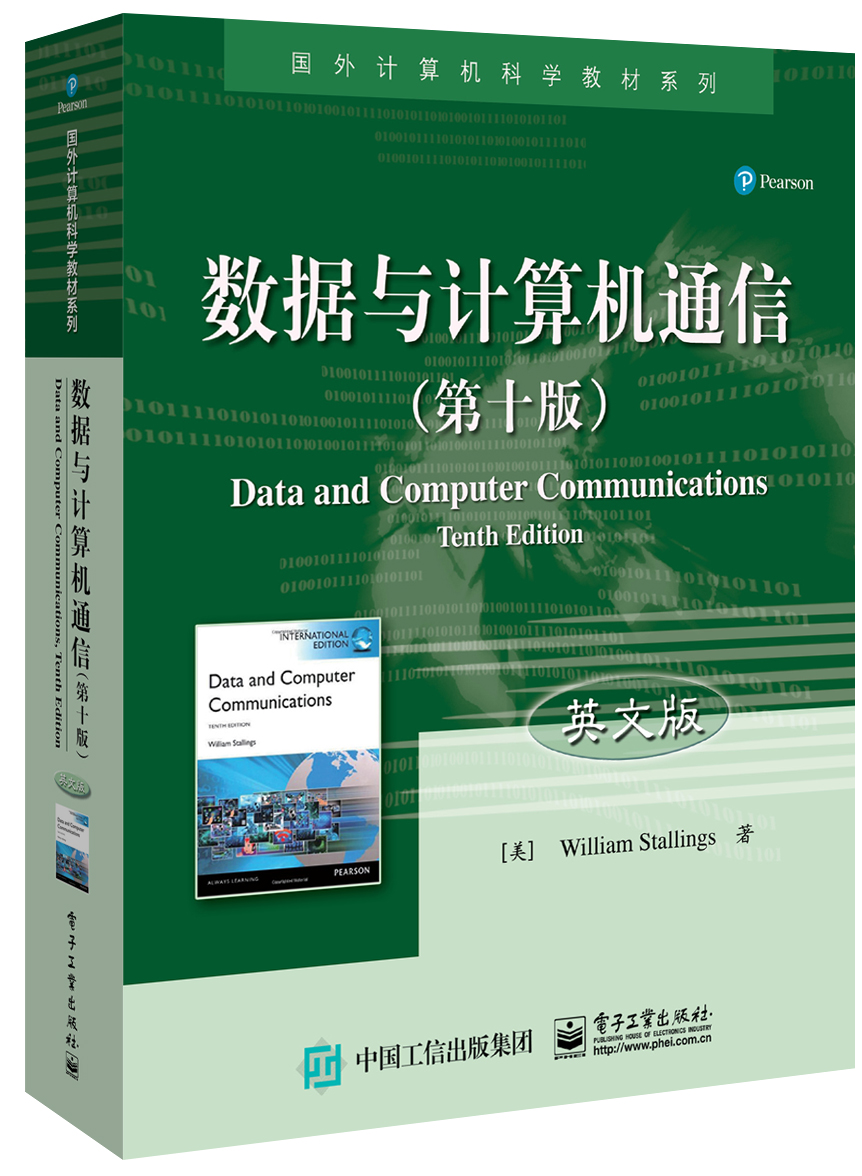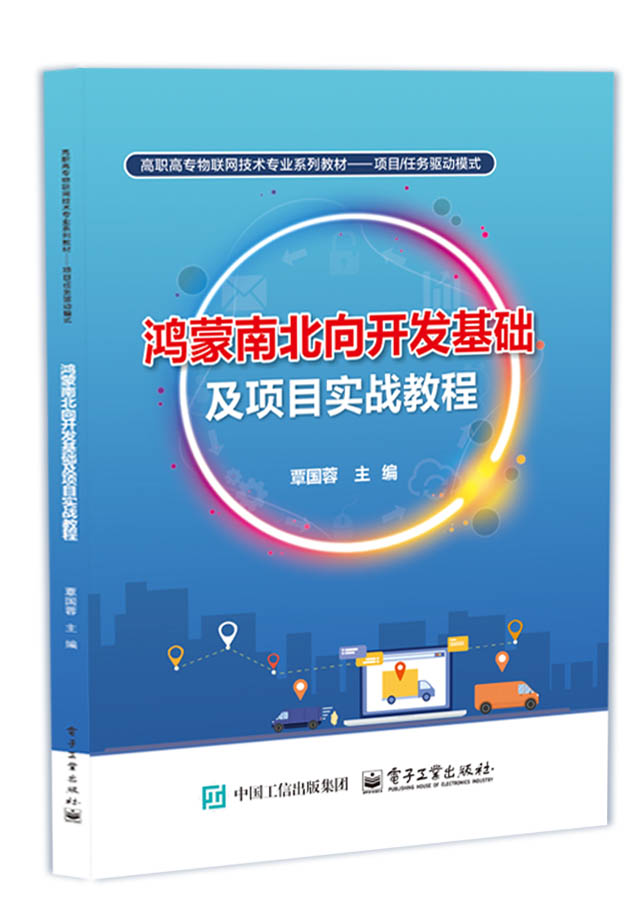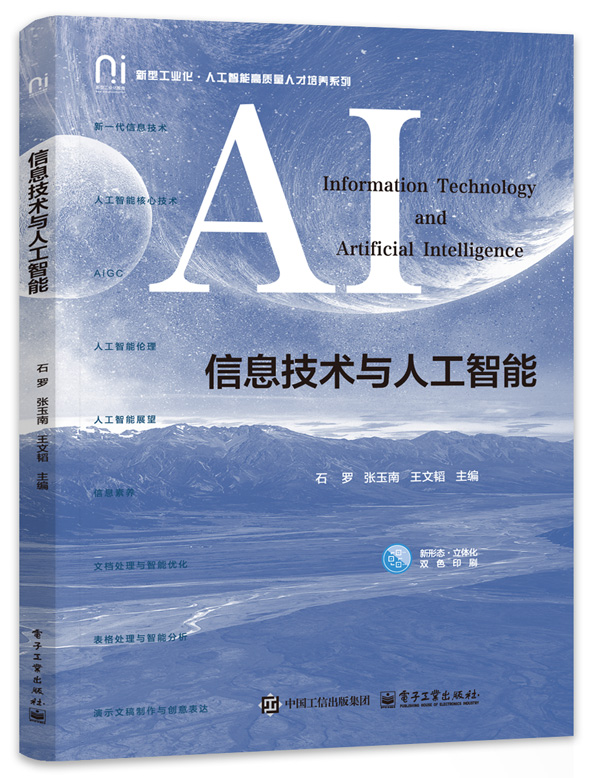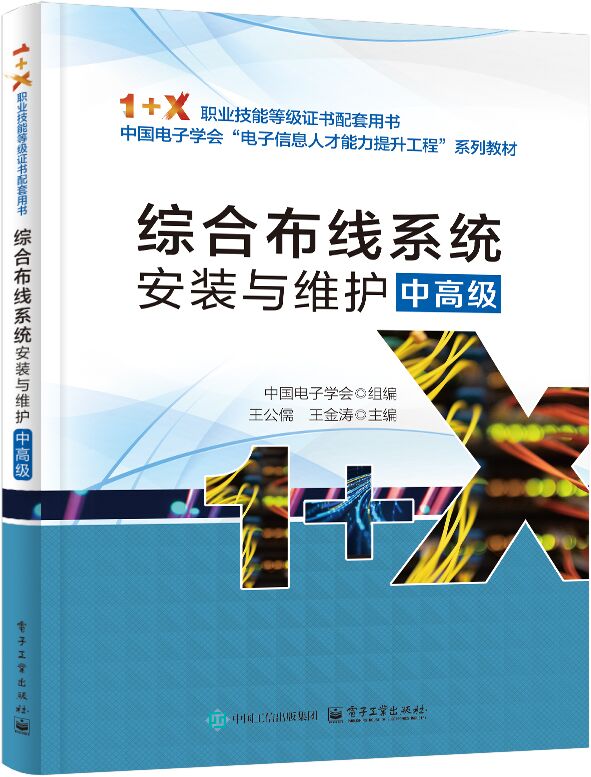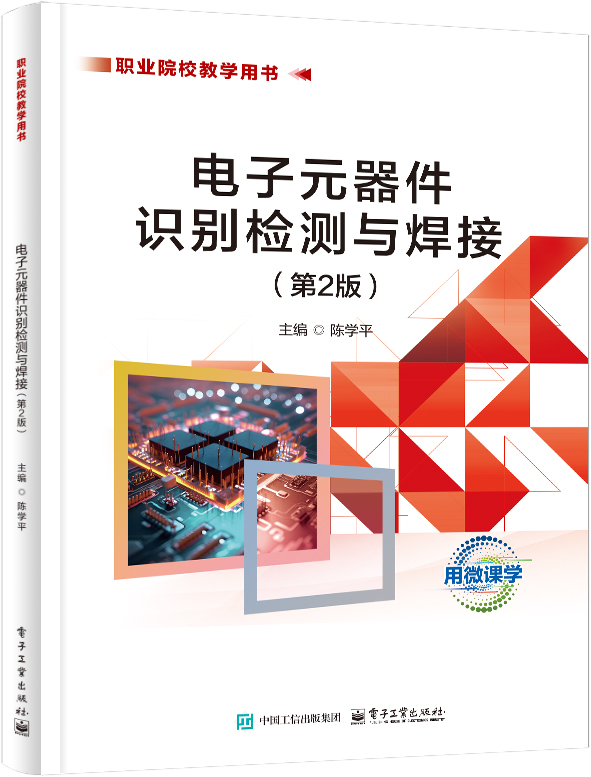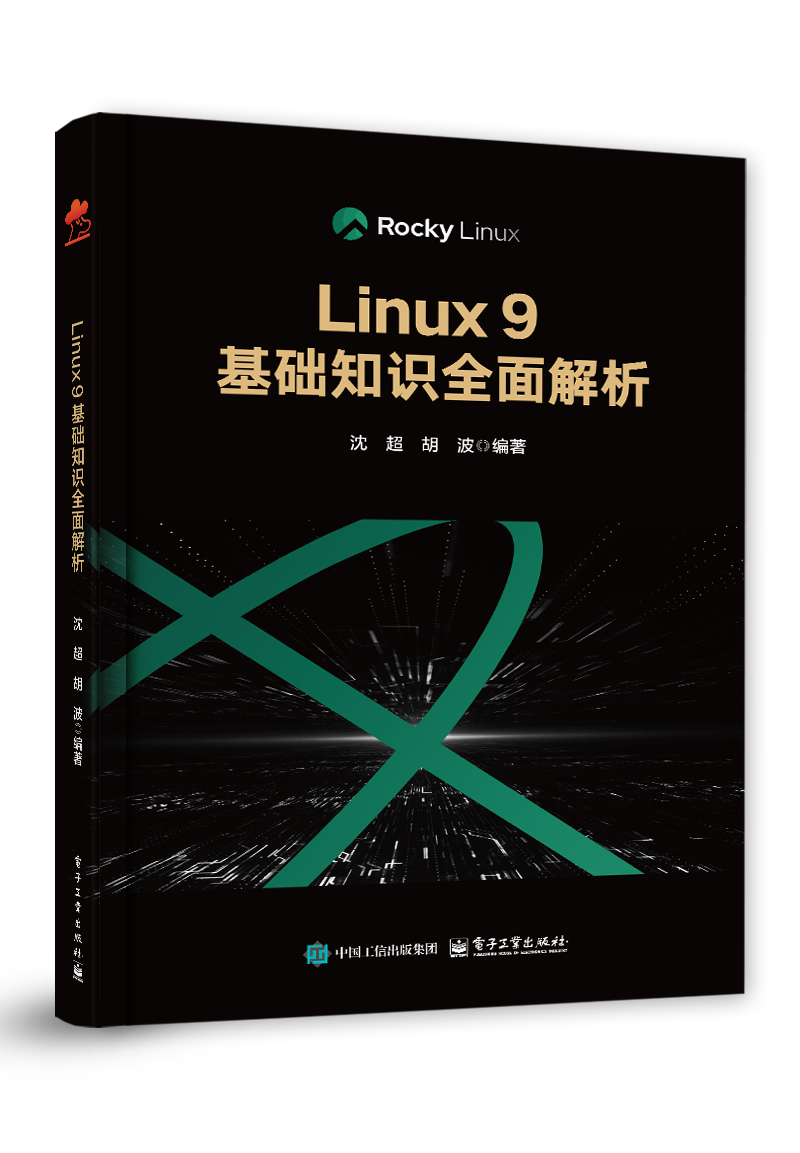数据与计算机通信(第十版)(英文版)
丛 书 名:
国外计算机科学教材系列
作 译 者:William StallingsWilliam Stallings(威廉·斯托林斯)
出 版 日 期:2018-06-01
书 代 号:G0343740
I S B N:9787121343742
图书简介:
本书是著名计算机专业作家William Stallings的经典著作之一,内容涉及基本的数据通信原理、各种类型的计算机网络以及多种网络协议和应用。新增主题包括软件定义网络,无线传输技术复杂性分析,4G蜂窝网络,千兆位WiFi,DHCP,PIM,QoS结构框架和标准因特网邮件体系结构。此外,本书还包括参考文献和缩略语,并且每章都附有习题和建议,以便读者进一步阅读。
-
配 套 资 源
-
图 书 内 容
内容简介
本书是著名计算机专业作家William Stallings的经典著作之一,内容涉及基本的数据通信原理、各种类型的计算机网络以及多种网络协议和应用。新增主题包括软件定义网络,无线传输技术复杂性分析,4G蜂窝网络,千兆位WiFi,DHCP,PIM,QoS结构框架和标准因特网邮件体系结构。此外,本书还包括参考文献和缩略语,并且每章都附有习题和建议,以便读者进一步阅读。图书详情
ISBN:9787121343742开 本:16开页 数:848字 数:1543.0本书目录
Chapter 0 Guide for Readers and Instructors 0.1 Outline of the Book 0.2 A Roadmap for Readers and Instructors 0.3 Internet and Web Resources 0.4 Standards UNIT ONE FUNDAMENTALS PART ONE OVERVIEW Chapter 1 Data Communications, Data Networks, and the Internet 1.1 Data Communications and Networking for Today's Enterprise 1.2 A Communications Model 39 1.3 Data Communications 42 1.4 Networks 45 1.5 The Internet 48 1.6 An Example Configuration 53 Chapter 2 Protocol Architecture, TCP/IP, and Internet-Based Applications 2.1 The Need for a Protocol Architecture 2.2 A Simple Protocol Architecture 2.3 The TCP/IP Protocol Architecture 2.4 Standardization within a Protocol Architecture 2.5 Traditional Internet-Based Applications 2.6 Multimedia 2.7 Sockets Programming 2.8 Recommended Reading and Animation 2.9 Key Terms, Review Questions, and Problems 2.10 Sockets Programming Assignments Appendix 2A The Trivial File Transfer Protocol PART TWO DATA COMMUNICATIONS Chapter 3 Data Transmission 3.1 Concepts and Terminology 3.2 Analog and Digital Data Transmission 3.3 Transmission Impairments 3.4 Channel Capacity 3.5 Recommended Reading 3.6 Key Terms, Review Questions, and Problems Appendix 3A Decibels and Signal Strength Chapter 4 Transmission Media 4.1 Guided Transmission Media 4.2 Wireless Transmission 4.3 Wireless Propagation 159 4.4 Line-of-Sight Transmission 4.5 Recommended Reading 4.6 Key Terms, Review Questions, and Problems Chapter 5 Signal Encoding Techniques 5.1 Digital Data, Digital Signals 5.2 Digital Data, Analog Signals 5.3 Analog Data, Digital Signals 5.4 Recommended Reading and Animations 5.5 Key Terms, Review Questions, and Problems Chapter 6 Error Detection and Correction 6.1 Types of Errors 6.2 Error Detection 6.3 Parity Check 6.4 The Internet Checksum 6.5 Cyclic Redundancy Check (CRC) 6.6 Forward Error Correction 6.7 Recommended Reading and Animations 6.8 Key Terms, Review Questions, and Problems Chapter 7 Data Link Control Protocols 7.1 Flow Control 7.2 Error Control 7.3 High-Level Data Link Control (HDLC) 7.4 Recommended Reading and Animations 7.5 Key Terms, Review Questions, and Problems Chapter 8 Multiplexing 8.1 Frequency-Division Multiplexing 8.2 Synchronous Time-Division Multiplexing 8.3 Cable Modem 8.4 Asymmetric Digital Subscriber Line 8.5 xDSL 8.6 Multiple Channel Access 8.7 Recommended Reading and Animations 8.8 Key Terms, Review Questions, and Problems PART THREE WIDE AREA NETWORKS Chapter 9 WAN Technology and Protocols 9.1 Switched Communications Networks 9.2 Circuit-Switching Networks 9.3 Circuit-Switching Concepts 9.4 Softswitch Architecture 9.5 Packet-Switching Principles 9.6 Asynchronous Transfer Mode 9.7 Recommended Reading 9.8 Key Terms, Review Questions, and Problems Chapter 10 Cellular Wireless Networks 10.1 Principles of Cellular Networks 10.2 Cellular Network Generations 10.3 LTE-Advanced 10.4 Recommended Reading 10.5 Key Terms, Review Questions, and Problems PART FOUR LOCAL AREA NETWORKS Chapter 11 Local Area Network Overview 11.1 Bus and Star Topologies 11.2 LAN Protocol Architecture 11.3 Bridges 11.4 Hubs and Switches 11.5 Virtual LANs 11.6 Recommended Reading and Animations 11.7 Key Terms, Review Questions, and Problems Chapter 12 Ethernet 12.1 Traditional Ethernet 12.2 High-Speed Ethernet 12.3 IEEE 802.1Q VLAN Standard 12.4 Recommended Reading and Animations 12.5 Key Terms, Review Questions, and Problems Appendix 12A Digital Signal Encoding for LANs Appendix12B Scrambling Chapter 13 Wireless LANs 13.1 Overview 13.2 IEEE 802.11 Architecture and Services 13.3 IEEE 802.11 Medium Access Control 13.4 IEEE 802.11 Physical Layer 13.5 Gigabit Wi-Fi 13.6 IEEE 802.11 Security Considerations 13.7 Recommended Reading 13.8 Key Terms, Review Questions, and Problems PART FIVE INTERNET AND TRANSPORT PROTOCOLS Chapter 14 The Internet Protocol 14.1 Principles of Internetworking 14.2 Internet Protocol Operation 14.3 Internet Protocol 14.4 IPv6 14.5 Virtual Private Networks and IP Security 14.6 Recommended Reading and Animations 14.7 Key Terms, Review Questions, and Problems Chapter 15 Transport Protocols 15.1 Connection-Oriented Transport Protocol Mechanisms 15.2 TCP 15.3 UDP 15.4 Recommended Reading and Animations 15.5 Key Terms, Review Questions, and Problems UNIT TWO ADVANCED TOPICS IN DATA COMMUNICATIONS AND NETWORKING PART SIX DATA COMMUNICATIONS AND WIRELESS NETWORKS Chapter 16 Advanced Data Communications Topics 16.1 Analog Data, Analog Signals 16.2 Forward Error-Correcting Codes 16.3 ARQ Performance Issues 16.4 Recommended Reading and Animations 16.5 Key Terms, Review Questions, and Problems Chapter 17 Wireless Transmission Techniques 17.1 MIMO Antennas 17.2 OFDM, OFDMA, and SC-FDMA 17.3 Spread Spectrum 17.4 Direct Sequence Spread Spectrum 17.5 Code Division Multiple Access 17.6 Recommended Reading 17.7 Key Terms, Review Questions, and Problems Chapter 18 Wireless Networks 18.1 Fixed Broadband Wireless Access 18.2 WiMAX/IEEE 802.16 18.3 Bluetooth Overview 18.4 Bluetooth Radio Specification 18.5 Bluetooth Baseband Specification 18.6 Bluetooth Logical Link Control and Adaptation Protocol 18.7 Recommended Reading 18.8 Key Terms, Review Questions, and Problems PART SEVEN INTERNETWORKING Chapter 19 Routing 19.1 Routing in Packet-Switching Networks 19.2 Examples: Routing in ARPANET 19.3 Internet Routing Protocols 19.4 Least-Cost Algorithms 19.5 Recommended Reading and Animations 19.6 Key Terms, Review Questions, and Problems Chapter 20 Congestion Control 20.1 Effects of Congestion 20.2 Congestion Control 20.3 Traffic Management 20.4 Congestion Control in Packet-Switching Networks 20.5 TCP Congestion Control 20.6 Datagram Congestion Control Protocol 20.7 Recommended Reading and Animations 20.8 Key Terms, Review Questions, and Problems Chapter 21 Internetwork Operation 21.1 Multicasting 21.2 Software-Defined Networks 21.3 OpenFlow 21.4 Mobile IP 21.5 Dynamic Host Configuration Protocol 21.6 Recommended Reading and Animations 21.7 Key Terms, Review Questions, and Problems Chapter 22 Internetwork Quality of Service 22.1 QOS Architectural Framework 22.2 Integrated Services Architecture 22.3 Resource Reservation Protocol 22.4 Differentiated Services 22.5 Service Level Agreements 22.6 IP Performance Metrics 22.7 Recommended Reading and Web Sites 22.8 Key Terms, Review Questions, and Problems Chapter 23 Multiprotocol Label Switching 23.1 The Role of MPLS 23.2 Background 23.3 MPLS Operation 23.4 Labels 23.5 FECs, LSPs, and Labels 23.6 Label Distribution 23.7 Traffic Engineering 23.8 Virtual Private Networks 23.9 Recommended Reading 23.10 Key Terms, Review Questions, and Problems PART EIGHT INTERNET APPLICATIONS Chapter 24 Electronic Mail, DNS, and HTTP 24.1 Electronic Mail-SMTP and MIME 24.2 Internet Directory Service: DNS 24.3 Web Access and HTTP 24.4 Recommended Reading and Animations 24.5 Key Terms, Review Questions, and Problems Chapter 25 Internet Multimedia Support 25.1 Real-Time Traffic 25.2 Voice Over IP 25.3 Session Initiation Protocol 25.4 Real-Time Transport Protocol (RTP) 25.5 Recommended Reading 25.6 Key Terms, Review Questions, and Problems APPENDICES Appendix A Fourier Analysis A.1 Fourier Series Representation of Periodic Signals A.2 Fourier Transform Representation of Aperiodic Signals A.3 Recommended Reading Appendix B Projects and Other Student Exercises for Teaching Data and Computer Communications B.1 Animations and Animation Assignments B.2 Practical Exercises B.3 Sockets Projects B.4 Wireshark Projects B.5 Simulation and Modeling Projects B.6 Performance Modeling B.7 Research Projects B.8 Reading/Report Assignments B.9 Writing Assignments B.10 Discussion Topics References Index 887 ONLINE CHAPTERS AND APPENDICES1 PART NINE NETWORK SECURIETY Chapter 26 Computer and Network Security Threats 26.1 Computer Security Concepts 26.2 Threats, Attacks, and Assets 26.3 Intruders 26.4 Malicious Software Overview 26.5 Viruses, Worms, and Bots 26.6 Recommended Reading 26.7 Key Terms, Review Questions, and Problems Chapter 27 Computer and Network Security Techniques 27.1 Virtual Private Networks and IPsec 27.2 SSL and TLS 27.3 Wi-Fi Protected Access 27.4 Intrusion Detection 27.5 Firewalls 27.6 Malware Defense 27.7 Recommended Reading 27.8 Key Terms, Review Questions, and Problems Appendix C Standards Organizations Appendix D Asynchronous and Synchronous Transmission Appendix E The OSI Model Appendix F The International Reference Alphabet Appendix G Proof of the Sampling Theorem Appendix H Ones Complement Representation and Addition Appendix I Statistical TDM Appendix J The Spanning Tree Algorithm Appendix K LAN Performance Issues Appendix L Matrix Multiplication and Determinants Appendix M Queuing Effects Appendix N Orthogonality, Correlation, and Autocorrelation Appendix O TCP/IP Example Appendix P Queue Management and Queueing Discipline Appendix Q Cryptographic Algorithms Appendix R Uniform Resource Locators (URLs) and Uniform Resource Identifiers (URIs) Appendix S Augmented Backus-Naur Form Appendix T Derivations of Equations and Examples Glossary展开前 言
前 言 第十版中的新内容 自本书第九版付梓以来,这个领域的发展以势不可挡的步伐持续向前。在此新版中,我一方面坚持对整个领域做出广泛而全面的介绍,另一方面也在努力跟上这些变化。在开始改版之前,有多位本专业的教授及专业人士对本书的第九版做了大量审阅工作。因此,这一版在很多地方的叙述比以往更清晰、更紧凑,并且许多图表都有所改进。 除了一些令本书更适合于教学和阅读的改进之外,还有一些实质性的变化贯穿全书。本书的章节组织结构改变了,现在的内容被分为两大单元,其中第二单元包含了许多高级内容以及与因特网相关的扩展材料。除了组织结构上的变动之外,最值得注意的变化包括以下内容: 套接字编程 新增一节用于介绍套接字编程。另外还有一些套接字编程作业及其解题示例,可用于教师指导。 软件定义网络 新增一节以涵盖这种被广泛使用的技术。 无线传输技术 本书以统一的形式探讨各种无线网络传输的重要技术,包括FDD、DDD、FDMA、TDMA、CDMA、OFDM、OFDMA、SC-FDMA和MIMO。 4G蜂窝网络 新增一节以涵盖4G网络和LTE-Advanced规范。 千兆位WiFi 新增一节包括了两个新的WiFi标准,IEEE 802.11ac和802.11ad,它们提供吉比特量级的WiFi接入。 固定宽带无线接入 新增几节内容以涵盖固定宽带无线接入因特网及相关的WiMAX标准。 前向纠错 前向纠错技术在无线网络中必不可少。在新版中充实了大量与此重要话题相关的内容。 动态主机配置协议(DHCP) DHCP是一种被广泛用于动态IP地址分配的协议。新增一节以涵盖这个协议。 数据报拥塞控制协议(DCCP) DCCP是为了在不增加TCP开销的情况下,满足多媒体应用对拥塞控制传输协议的需求而出现的一个新协议。新增一节以涵盖DCCP。 协议独立多播(PIM) PIM是一种最重要的因特网多播路由算法,以新的一节来涵盖此内容。 支持服务质量(QoS)的体系结构框架 新增一节以涵盖ITU-T 建议书 Y.1291,它为因特网QoS设施提供了一个整体框架。 电子邮件 扩充第24章中关于电子邮件的章节以包含对标准因特网邮件体系结构的讨论。 学习目标 现在,每章开始都列出详细的学习目标。 教学大纲案例 本书文字所包含的内容超过了一个学期能够轻松学完的量。因此,我们为教师提供一些教学大纲案例,以指导如何在有限的时间(例如,16周或12周)使用这些内容。所有案例都是以使用本书第九版的教授的实践经验为基础的。 此外,继承自第九版的内容也经过修订,增加了新的图示,并修订和更新了一些内容。 宗旨 本书力图向读者全面完整地介绍数据与计算机通信这一广阔领域。从书中的章节结构组成可以看出作者试图将此庞大的主题细化,使之更易于理解,并逐步向读者揭示这一领域内的高新技术。本书的重点是基本原理以及与该领域的技术和体系结构有关的本质问题,同时也对前沿技术进行了详细讨论。 本书所讨论的内容始终围绕以下几条主线展开: 基本原理 虽然所涉甚广,但有一些基本原理会作为主线反复出现,并贯穿该领域全部内容。例如复用、流量控制和差错控制。书中反复强调这些基本原理,并对具体技术范围下的各种应用进行了对比。 设计方法 本书详细讨论了满足特定通信需求的不同设计方法。 标准 在数据与计算机通信领域中,标准起着越来越重要的,甚至是决定性的作用。要想了解某一技术的现状和发展方向,就必须广泛深入地探讨其相关标准。 对2013版ACM/IEEE计算机科学课程体系的支持 本书的阅读对象包括学术研究人员和专业技术人员。对此领域有兴趣的专业技术人员可将本书视为基础入门教材,十分适合于自学。作为教科书来说,它可用于一个学期或两个学期的课程。此版本的目的是为了支持ACM/IEEE Computer Science Curricula 2013(CS2013)课程体系。该CS2013课程体系包括网络和通信知识域(Networking and Communication,NC),它是计算机科学专业知识体系(Body of Knowledge)中的一项知识域(Knowledge Areas)。CS2013将所有课程分为三类:一级核心Core-Tier 1(在课程中应包括所有的主题)、二级核心Core-Tier 2(课程应该包括所有或几乎所有的主题)、选修(在向广度和深度扩展时需要)。在NC知识域中,CS2013包括了2个一级核心主题和5个二级核心主题,其中每个主题又有多个子课题。本书涵盖了CS2013在这两级课程中列出的所有主题和子课题。 下表列出了本书对NC知识域提供的支持。(略) 内容安排 本书分为两个单元,共包括九部分,详情参见第0章: 第一单元包括了数据通信与网络的基础知识,如下所示。 第一部分:概述 第二部分:数据通信 第三部分:广域网 第四部分:局域网 第五部分:网际协议与运输协议 第二单元包括了数据通信与组网高级专题,如下所示。 第六部分:数据通信与无线网络 第七部分:网际互连 第八部分:因特网应用 第九部分:网络安全 此外,本书还有许多与教学相关的特色,包括使用大量图表来阐明所讨论的内容。每一章都设有关键术语列表、复习题、习题,以及深入阅读的建议,并在书末列出了参考文献和缩略语表。本书还在网上提供了术语表,并为教师提供了试题库。 本书充分模块化的章节结构为课程安排提供了很大的灵活性。在第0章中有对课程安排的若干详细建议,可以采用自顶向下,也可采用自底向上的教学策略。 教师支持材料① 本书的主要目标是尽可能地成为这个令人兴奋又充满变化的主题的一个有效的教学工具。这个目标既反映在本书的结构上,也反映在它的支持素材中。为了帮助教师,用以辅助正文的补充材料如下所示: 解题手册 包含所有章节末的复习题和习题解答。 课题手册 适用于下面列出的所有课题类型的课题布置建议。 PowerPoint幻灯片 一组包括了所有章节内容的幻灯片,适合讲课使用。 PDF文件 内容为本书中所有的图和表。 试题库 逐章给出的习题集,另有单独的解答文件。 教学大纲案例 本书文字所包含的内容超过了一个学期能够轻松学完的量。因此,我们为教师提供一些教学大纲案例,以指导如何在有限的时间使用这些内容。这些案例都以使用本书第九版的教授的实践经验为基础。 课题及其他学生练习 对于许多教师来说,一个或一组课题是数据通信和网络教学课程中的重要组成部分,可以让学生们通过亲自动手实践,从而加深对课本中概念的理解。本书有侧重地在一些课程中提供相关的课题材料。教师资源中心不仅对如何布置和指导这些课题提供帮助,而且还包括了用于各种不同类型课题的用户指导及具体的课题布置,所有课题都完全针对本书设计。教师可布置以下几种类型的作业: 实践练习 通过使用网络命令,学生可以获得网络连接方面的体验。 Socket编程课题 在本前言稍后详细描述。 Wireshark 课题 Wireshark是一个协议分析程序,它使得学生能够研究各种协议行为。我们提供了一个教学视频以帮助学生从零开始,另外还有一组Wireshark作业。 仿真课题 学生可使用仿真软件包cnet来分析网络的行为。在教师资源中心包括一些相关作业。 性能建模课题 提供了两种性能建模技术:tools软件包和OPNET。在教师资源中心包括一些相关作业。 调研课题 教师资源中心包括一个推荐的调研课题列表,这些调研既有需要上网搜索的,也有需要查找文献的。 阅读/报告作业 教师资源中心包括一个可用于阅读作业和写报告的论文列表,以及推荐的作业用语。 书面作业 教师资源中心包括一个书面作业的列表,以促进对本书内容的了解。 讨论题 这些讨论题可用于教室、聊天室或消息板等环境中,以便更深入地对特定领域进行探讨,并且有助于学生之间的相互合作。 多种多样的课题以及其他一些学生练习使教师可以将本书视为丰富多样的学习体验中的一个重要组成部分,并通过剪裁课程计划以满足教师和学生的特定需求,详见在线附录B。 套接字编程 套接字是所有使用TCP/IP协议族的网络通信背后所依赖的基础。套接字编程是相对简单的课题,对学生来说,它们则可能是非常令人满意和有效的实践项目。这本书为学生学习和使用套接字编程提供了大力支持,以加强他们对网络的理解,包括: 1. 第2章提供了对套接字编程的基本介绍,涉及TCP服务器和客户端程序详细分析。 2. 第2章还包括一些课后的套接字编程作业。解题示例在本书的教师资源中心可获得。 3. 更多的套接字编程作业,附以解题示例,同样可在教师资源中心获得,包括一些中等规模的任务以及内容更丰富的项目,以逐步实现一个简化的即时通信客户端和服务器。 总之,这些资源使得学生能够对套接字编程有充分的理解,并获得一定的网络应用程序开发经验。 学生用的在线文档 对于新版,有大量学生可使用的原始支持材料已在线提供,读者可登录华信教育资源网(www.hxedu.com.cn)免费注册下载,具体内容如下所示。 在线章节 为节省纸张并降低定价,本书中关于因特网应用和网络安全的4章内容以PDF文档的形式提供,本书目录中已列出。 在线附录 有大量有趣的主题可用以支撑文中所讨论的内容,但是无法全部印在书中。我们为感兴趣的学生列出了19个相关主题,详见目录。 课后习题和解答 为帮助学生了解相关内容,我们提供了独立的课后习题和解答。展开作者简介
本书暂无作者简介 -
样 章 试 读
-
图 书 评 价 我要评论

